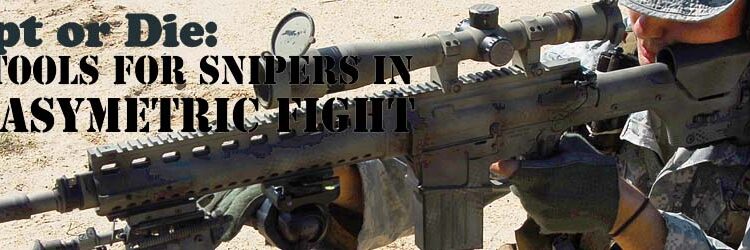By Christopher Rance
Today’s current snipers are taking a new approach for time sensitive missions that require speed instead of stealth. This approach has the sniper and spotter each assume the role of being an independent shooter and two weapons on target are more effective. The time spent on a spotter setting up his equipment hinders the team when conducting time critical missions. There are certain tools the sniper team will use to facilitate this dynamic setup. The riflescope is the gateway to the field of battle for the sniper. The sniper needs a rifle scope that enhances his capabilities to engage targets fast and effectively. With today’s advancement in rifle scopes, features such as first focal plane reticles benefit the sniper by allowing the reticle to be read correctly at any power setting. The sniper doesn’t have to be constricted to milling off a target in a default power setting. Another key feature in today’s rifle scopes is high magnification. This enables the team to observe and correct their shot or their team member’s shot without coming off their respected weapon. A rifle scope is only as good as the reticle inside it. A reticle that the military is adopting is The H59, Horus Vision reticle. This reticle forms a Christmas tree-like grid in mils below the first horizontal stadia line. With the H59 reticle, the sniper visually makes elevation and windage corrections from the grid. By using the mil-radian grid system, the sniper can identify his hit or miss, and make corrections by adjusting his hold on the target. Because of the target rich environment, the sniper doesn’t dial for elevation or wind. The hold system is faster and more efficient for rapid target engagement.
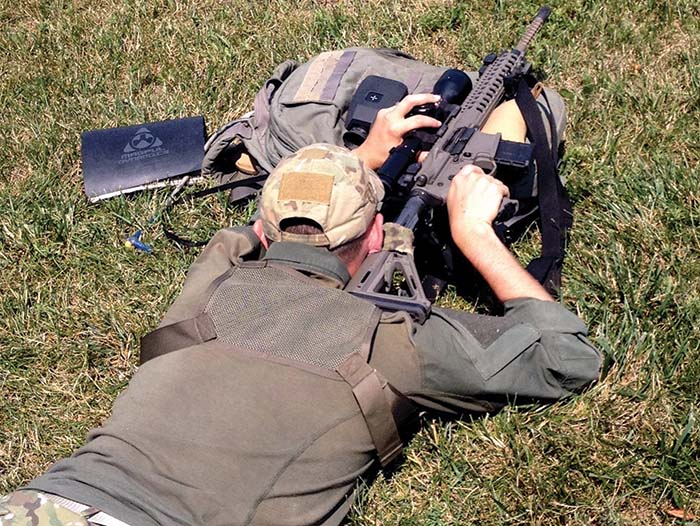
Another important tool to assist the shooter is a ballistics program. A ballistics program is a tool that allows the sniper to calculate bullet drop, wind deflection, time of flight, kinetic energy and other details of the specific round the sniper is shooting. In short, a ballistics program is the tool that accounts for all of the deterministic variables in long range fire. The HorusKestrel device is a popular tool that the military uses. This device combines the critical environmental data and targeting software solutions required for precision shooting. The shooter can create up to five targets customized for location, distance, direction, declination and winds. The Kestrel allows the user to obtain highly accurate measurements of wind and compass direction for target bearing. The Kestrel meter tracks current atmospheric data and automatically updates the firing solution. The new models of the HorusKestrel, allow the shooter to lase a target with a Vectronix PLRF and transmit the target range to the HorusKestrel through a Bluetooth connection. This feature enhances the sniper team in acquiring a firing solution faster.
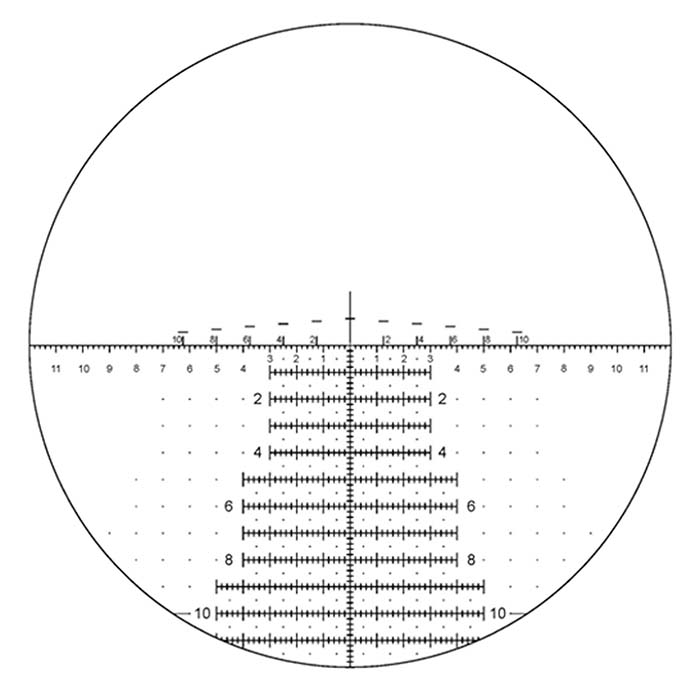
A semi-auto sniper rifle enables the sniper team to move into a variety of environments with ease. The size and weight of such rifles aid in missions that rely on speed and violence of action. With the 7.62 LaRue Tactical OBR being magazine fed and having a 20-round capacity, it is effective at both precision fire and suppression if needed. The 7.62 OBR also breaks down to allow much more in depth maintenance on the operator level than that of a standard M24 or M40A3, allowing easier function in all environments. Semiautomatic capability is essential in order to be able to switch from the long fight in a rural environment to the short fight in an urban environment. The ability to engage targets from 5 meters to 1,000 meters is crucial.
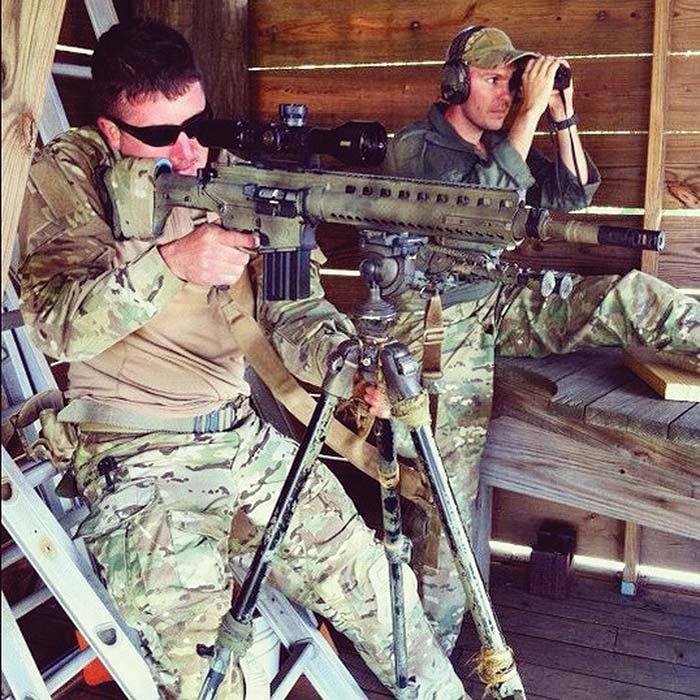
The Raid
To understand how a sniper team supports a time sensitive target mission, I have created a scenario. In this scenario, the sniper team is in a supporting role of a raid to extract a high level Taliban figure located in a village on the border of Afghanistan. The Primary method of insertion is by helicopter to the adjacent structures to provide observation and security of the assaulting force. The sniper team moves into position. The primary shooter set’s up on target and begins pulling security. The secondary shooter uses the Vectronix PLRF to acquire ranges for target reference points. The data is streamed into the HorusKestrel and firing solutions are created. A target presents itself to the team. The primary shooter receives a command to hold 4.2 MILS up and begins his final firing phase. The secondary shooter estimates wind speed and direction to the target and uses a simplified wind formula to calculate a call. The secondary shooter gives the call of .8 MILS right to the primary shooter. The round is sent and is spotted to have missed the target by .2 MILS left. The secondary shooter sees this through his riflescope and because of the H59 reticle, he simply holds 1 MIL right and fires. The primary shooter also reengages with the new hold and within seconds, two rounds are on target. Team communication is done by visually engaging the reticle and relaying precise holds to one another.
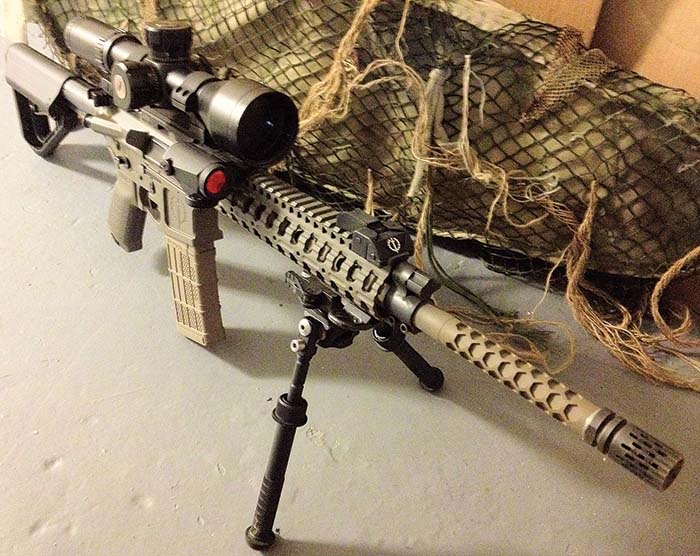
The 2012 International Sniper Competition
With the battlefield rapidly changing, training needs to address the needs and innovations in weapons, equipment and tactics for the sniper. The military needs to expose its military snipers to the latest resources and shooting trends. The sniper needs to evolve with change, not regress. One way the military tests its finest snipers and their equipment is at the United States Army International Sniper competition held at Fort Benning, Georgia. The focus of the competition is to bring teams together to share battlefield lessons learned and to compete tactically and technically. Training is an excellent tool, but competition puts a high demand on snipers to perform well while under stress. Competitions also provide the sniper team to assess one’s equipment and analyze their performance both physically and mentally. The competition, scheduled November 4th to November 8th, is entering its 12th year. This year it will have 35 teams from the Army, Army National Guard, Marine Corps, Air Force, Special Forces, SWAT and foreign allied countries compete in 15 grueling events. The 72 hour competition virtually runs non stop, with only 1 to 2 four hour rest breaks during the event. The competition will have the two man teams compete in sniper stalks, urban shooting, orienteering, stress shoots and other marksmanship tasks.
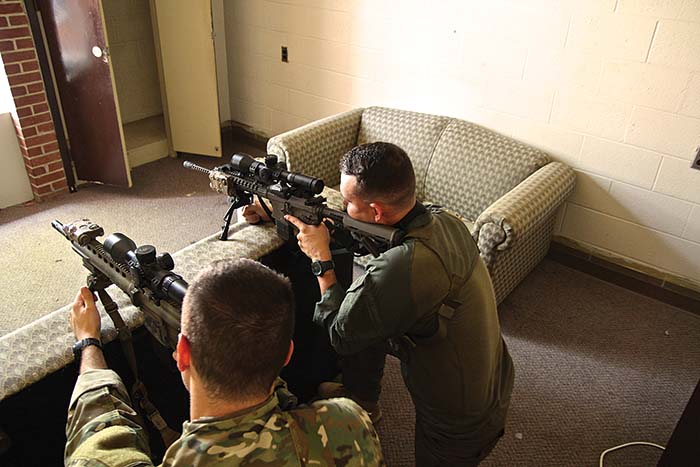
I will have the privilege of competing in this year’s International Sniper competition with my partner SGT Christopher Stevens. We will be representing the 3rd Infantry Regiment, The Old Guard, out of Arlington, Virginia. We will be the first team from The Old Guard to compete in this competition. Our training for this event has been rigorous and rewarding. We have had the pleasure to train with some of America’s finest and I will continue coverage on this event in an upcoming article and offer an inside perspective on the competition, from interviews with other competitors, to after-action reviews of each event.
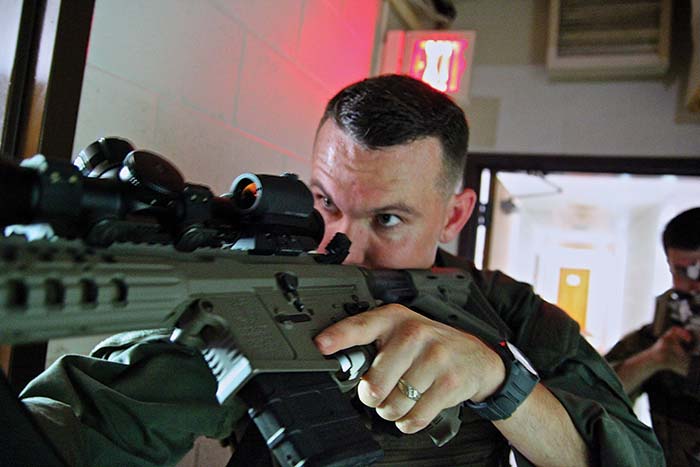
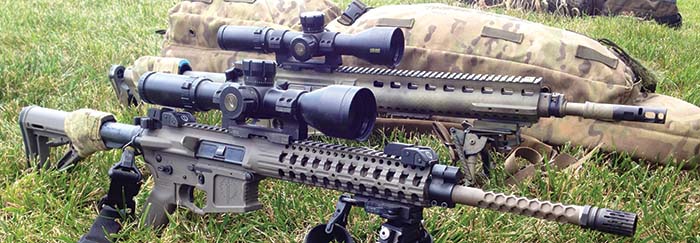
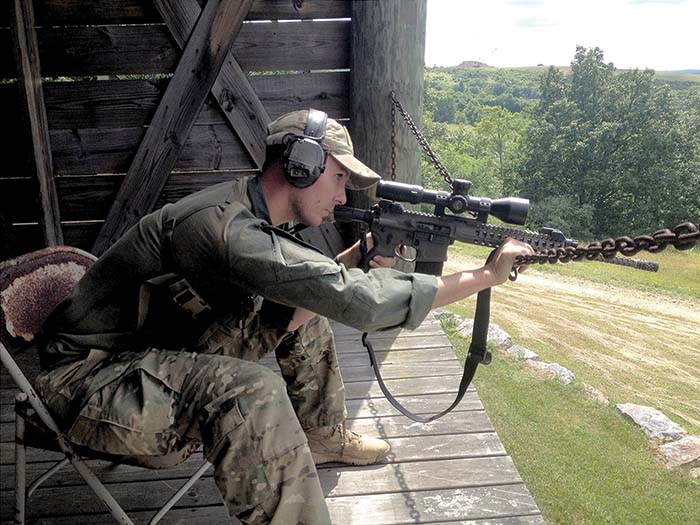
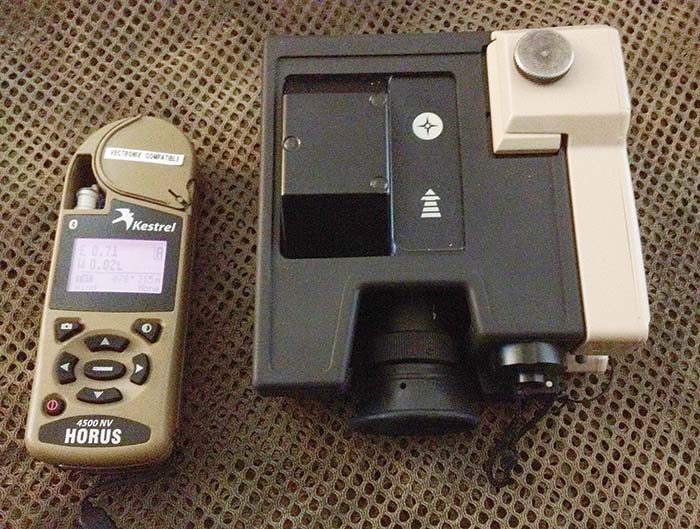
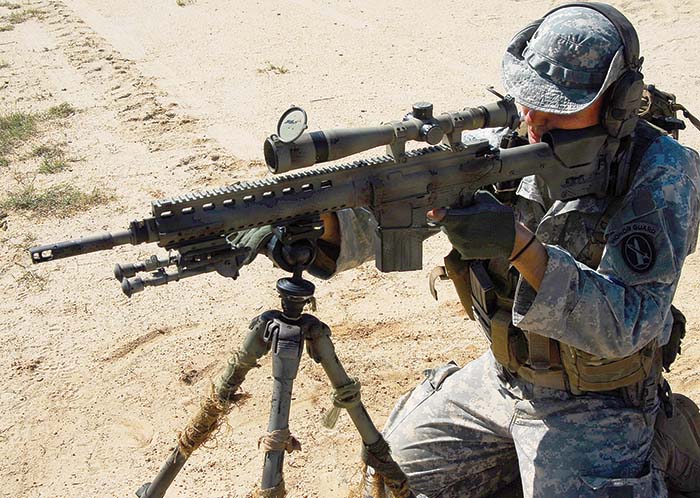
| This article first appeared in Small Arms Review V16N4 (December 2012) |



